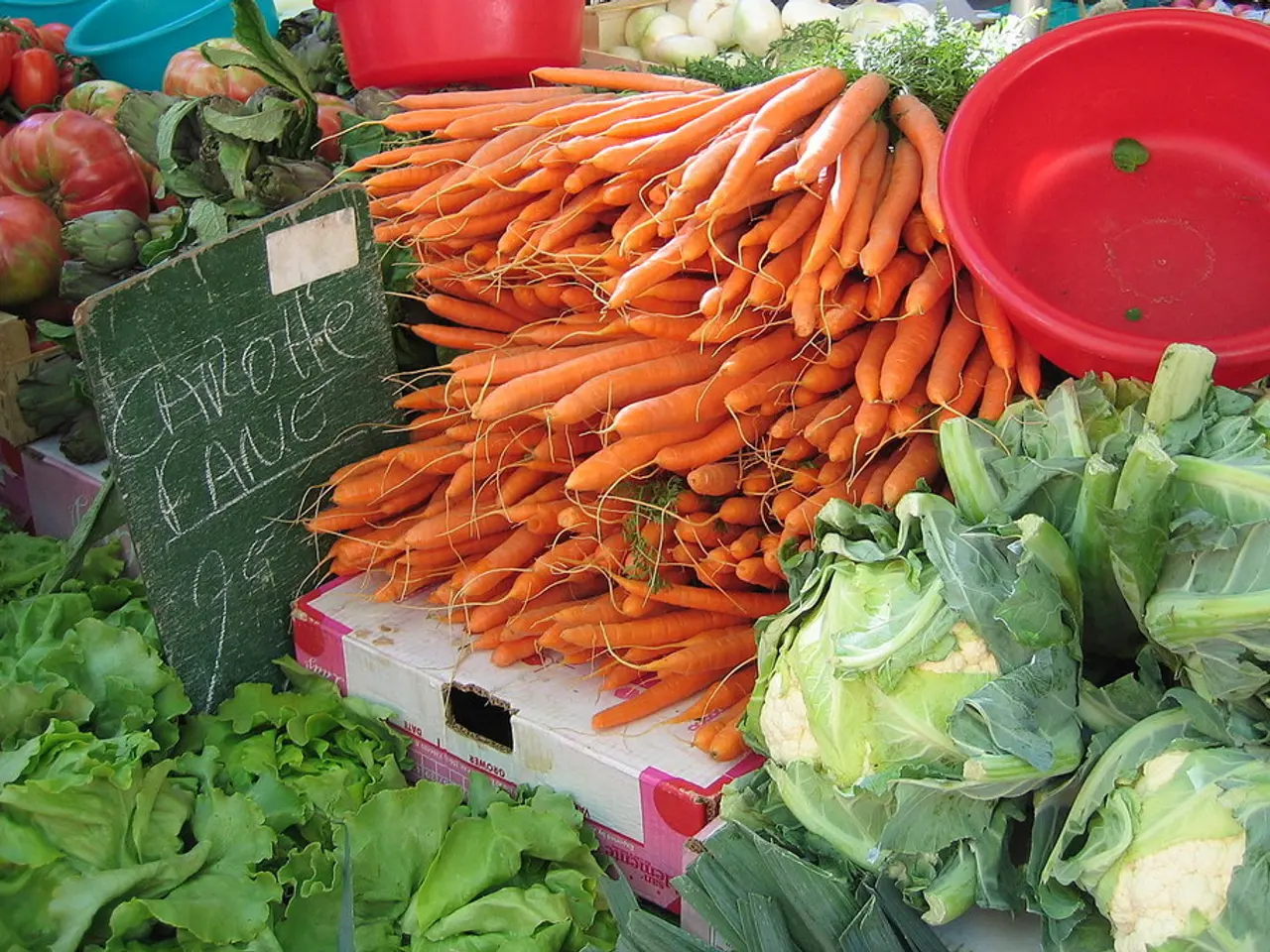Gardening Tasks for April Fruits and Vegetables
April is the perfect time to start preparing your vegetable garden for the coming growing season. Here's a guide to help you get started:
Planting and Sowing
- Climbing beans are not quite ready to be planted towards the end of the next month, but supports for them can be set up in April. Leeks, on the other hand, can be sown in a module tray filled with peat-free multi-purpose compost. Sow two or three seeds per module, cover with sieved compost, and move the tray outside at the start of the next month. Leeks are a good choice for clay soil where carrots and parsnips might not grow well.
- Another method to sow leeks is to make a drill directly in the ground with a hoe blade and sow seeds thinly along the row, covering them with sieved compost. Onions can still be planted in April, and one onion set should be pushed into the soil every 15cm or 10cm for spring onions.
- Starting vegetables from seed in April can save money and provide a wider choice of varieties.
Supporting Climbing Crops
Effective ways to support climbing crops in a vegetable garden include using various types of trellises, stakes, and cages tailored to the specific plant's growth habit and weight. Some commonly recommended supports are:
- Teepee or tripod trellises made from tall poles, which work well for beans and peas, allowing vines to climb naturally.
- Netting or wire mesh, useful for peas to easily cling to vertically.
- Strong lattice panels, A-frames, or sturdy wooden trellises for heavier fruit like cucumbers, melons, and indeterminate tomatoes that require robust support due to weight.
- Tomato cages and stakes, though cages may be better for lighter plants, and staking is essential for tall, top-heavy vegetables such as tomatoes to keep them upright in wind or rain.
- Creative repurposed supports, like metal frames from old furniture or concrete reinforcing mesh formed into cages, can provide durable and customized vertical growing structures.
- Movable lightweight trellises and tiered garden beds with attached trellises maximize vertical space, ideal for container gardening and small areas.
- T-post trellises and panel trellises converting fences into growing areas for peas, cucumbers, squash, and other climbers are also effective, adding functional and aesthetic value.
Key considerations include choosing a support that matches the plant's size and weight at maturity, ensuring sturdiness to withstand weather, and maximizing garden space by growing vertically with trellises or stakes. Supporting climbing crops vertically also improves air circulation, reduces disease, and simplifies harvesting.
Weeding and Care
Weeding in April can reduce pressure in May and June and increase yields. Checking plants daily for watering helps understand their needs and avoid overwatering. The author usually wears short sleeves for gardening in April.
Harvesting and Attracting Pollinators
Leeks can be harvested over a long period from late summer to winter. Harvesting your crops not only provides fresh produce for your table but also allows space for succession planting. Solitary bees can help pollinate crops and can be attracted to gardens with holes in walls for nesting and bee hotels.
By following this guide, you'll be well on your way to a bountiful vegetable garden this spring. Happy gardening!
[1] Gardening Know How. (2021). Vertical Gardening: How to Grow Vegetables Upwards. Retrieved from https://www.gardeningknowhow.com/edible/vegetables/vgen/how-to-grow-vegetables-upwards.htm
[2] The Spruce. (2021). How to Support Climbing Vegetables. Retrieved from https://www.thespruce.com/supporting-climbing-vegetables-3188171
[3] The Guardian. (2016). Vertical gardening: how to grow more in less space. Retrieved from https://www.theguardian.com/lifeandstyle/2016/apr/22/vertical-gardening-how-to-grow-more-in-less-space
April is the optimal time to start planning your home-and-garden, particularly your food-and-drink section, by setting up supports for climbing beans and leeks. Apart from planting leeks in module trays filled with peat-free multi-purpose compost, another method is to make a drill directly in the ground and sow seeds thinly along the row. This lifestyle choice promotes vertical gardening, which maximizes space and allows for a wider variety of vegetables to be grown.




